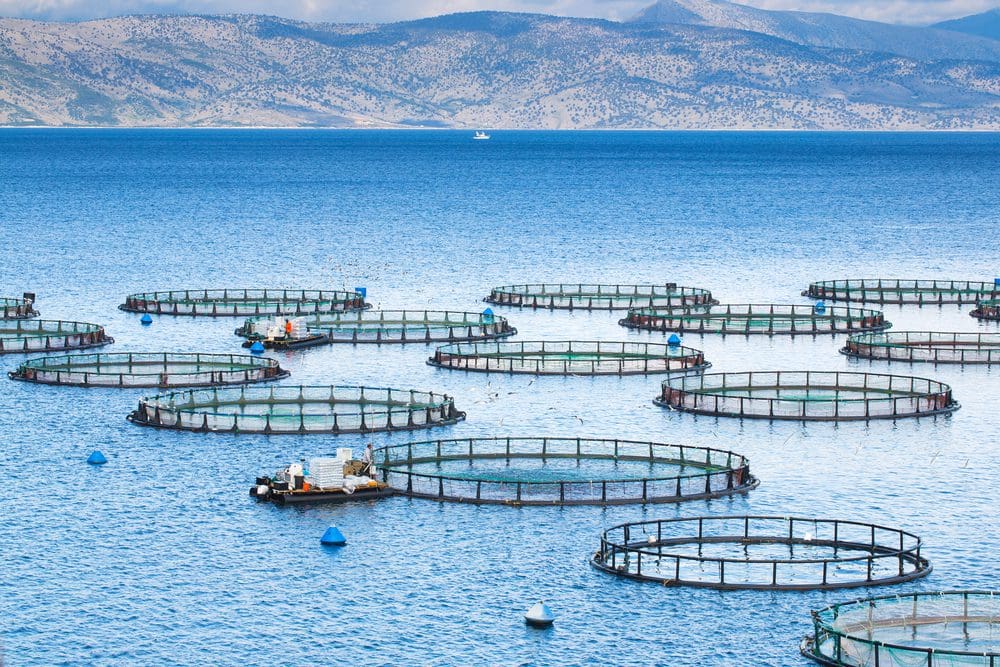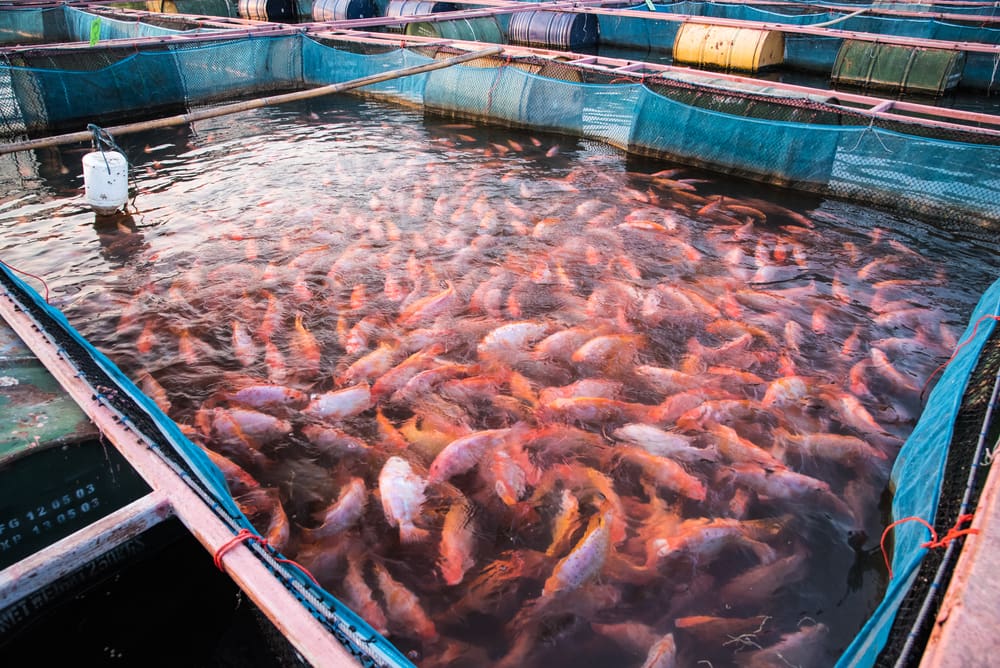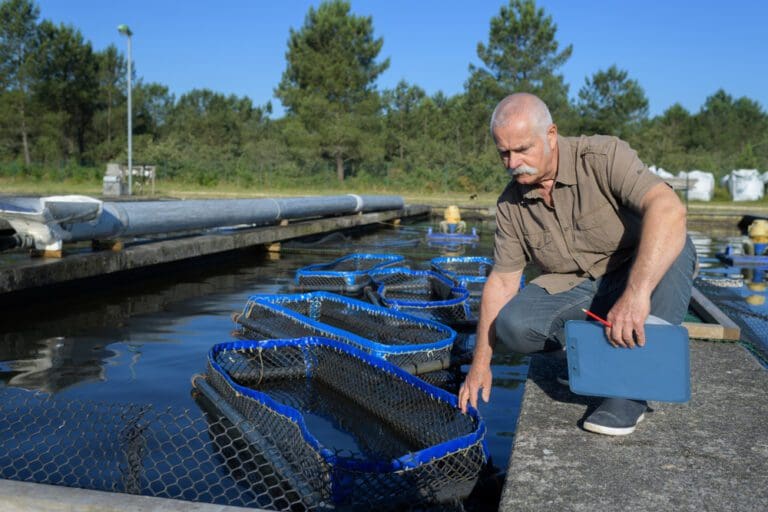Fish Farming Issues
For decades, intensive fish farms have been a key source of delivering our insatiable appetite for food from our oceans.
They have also helped ease the issue of over-fishing where fish populations were harvested to the detriment of both the species, environment and the communities who relied upon it.
However, such commercial operations are not without their problems, with waste from the fish can pollute the water in which it is sited. In addition, disease or parasites among the farmed fish can infect local species with negative knock-on effects.
But new developments could be on the verge of transforming the sector, putting the focus on food safety amid a world facing the challenges of climate change and a drain on its natural resources.
Revolutionising the food industry and fishing operations:

First there is the advent of mobile fish farms. Built into large ocean-going vessels, they promise to eliminate many of the issues traditional close-to-shore fish farms face.
It can avoid bad weather conditions, seek out the best quality water and, given it’s on the move, avoid any problems which often hamper static farms.
Still in their relative infancy for now, at least, the advances are gaining traction around the world.
And if it can make in-roads into the fish-farming sector, the rewards could be significant.
According to Market Data Forecast, the global fish-farming industry was worth more than $285 billion by the end of 2022, with predictions it will topple £378 billion by 2028.
Farmed fish currently accounts for around 50% of all fish caught in the world, according to the United Nations.
Investment opportunities for a fish farmer within the food industry arises:
So just what benefits does a mobile fish farm bring?
Ocean Arks Technology is one of those companies seeking to launch its first vessel over the coming years.
Based in Chile – and partnering with London-based Ocean Sovereign – it has a futuristic design for its 60-metre wide, 170-metre long vessel – capable of moving through the oceans with a number of cages supporting the fish. It says it plans to farm the likes of salmon, tuna and trout amongst others.
It anticipates producing 3,900 tonnes of fish in each cycle.

Founded in 2017, it explains: “Through its efficient and eco-friendly propulsion system, it monitors, seeks and follows the best water conditions for fish production, always maintaining the best levels of oxygen, temperature, pH, salinity and other important variables to maintain a high fish productivity avoiding areas of low oxygen, acidity, algae bloom, red tide and other risks affecting coastal aquaculture.
“The goal of our technology is to restore mobility to the fish, move them away from the coast and take them to open water, to areas far from the accumulated problems of overconcentration, pollution, parasites, algae bloom, red tides, drops of oxygen, among many others, giving them the opportunity to live in better quality water: better for fish, for producers, for consumers and for the planet.
“Aquaculture is one of the great opportunities that the planet has to feed the growing world population efficiently and sustainably. It is not unsustainable per se, but the way we do aquaculture will make a difference.”
China’s mobile fish farm
China has, however, already stolen a march on them. It launched the world’s first mobile fish farm in 2022.
Named Guoxin-1 – and costing $67 million – it has been hailed a technological breakthrough for China’s deep-sea aquaculture industry.
It claims to be able to produce 3,700 tonnes of fish each year with salmon a key component.
The team behind it say it will deliver a 25% shorter production cycle with a breeding capacity five times that of traditional cages.
Operating in the East China, South China and Yellow seas, sister ships are due for delivery in 2024.

While not the same in terms of mobility, a Norwegian company has created mobile closed units for salmon farming. Able to be moved to where the customer needs them, FishGlobe promises its product will deliver twice-hourly water renewal and aims to eliminate many of the issues currently found in fish production.
Last year, it signed an agreement with Grieg Seafood Rogaland, a subsidiary of salmon farming giant Grieg Seafood, for a 30,000-cubic-meter closed-containment fish farm.
There’s also Forever Oceans, which has so far attracted more than $111 million in funding, which has taken fish farming from close-shore sites and into the deep ocean.
It explains: “More than ten miles off-shore in at least 1,000 feet of water, our custom-designed modular fish enclosures drift naturally with the currents, anchored to our single-point mooring.
“Open-ocean currents clean the enclosures, carrying away waste and naturally keeping disease to a minimum. When weather becomes harsh, these enclosures can be remotely lowered out of harm’s way, allowing the entire operation to withstand a category four hurricane.”
Salmar Aker Ocean in Norway is also well progressed with its off-shore sites – some of the biggest in the world.
Following successful trials of its prototype Ocean 1, it has launched its Smart Fish Farm some 45 miles of the Norwegian coast. Designed to deliver 19,000 tonnes of fish per cycle, it aims to deliver 150,000 tonnes a year by 2030.
It has also expressed interest in expanding globally.
Conclusion
Farmed fish is already an enormous global industry. But environmental and quality concerns has seen a shift in attitudes and plenty of money poured in to come up with a solution. Mobile fish farming may still be an expensive and unproven extension, but deep ocean farm fishing, way off our coastlines, is increasingly seeing investment and opportunities for canny investors with an eye on the world’s growing appetite.
Companies to Watch
Ocean Arks Technology, FishGlobe, Salmer Aker Ocean, Forever Oceans








